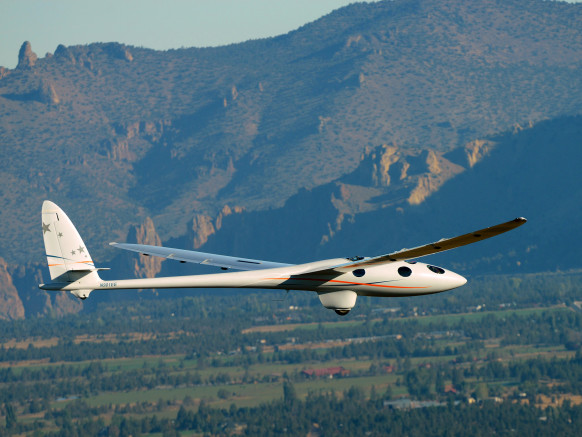Experimental glider could reach edge of space in future
On Thursday, Allen McArtor, chairman of Airbus North America(AIR.PA), told Reuters after he visited Oregon to watch the test that the first flight is an important achievement and it is quite impressive. The flight is now hailed as one of the milestones of aviation and is considered a significant step towards the next goal proposed by Ed Warnock, who is the chief executive of the project. Altitudes expected to be reached in next year’s flights would exceed those reached by the U-2 and the SR-71 aircraft.
The Perlan 2 is now undergoing even more upgrades, in order to reach double the altitude of your average commercial flight.
This first flight jumpstarts a project to complete a mission to sail 90,000 feet above the Earth, which will make it the highest-flying winged aircraft in history. To reach such spectacular heights, the glider is pressurized and the crew must breathe pure oxygen through a rebreather system, one that is similar to the kinds of breathing technology astronauts use in space. Its creators say that if they meet with success next year, they will be opening a world of new discoveries related to high-altitude flight, climate change and space exploration. In the next flight, they expect the Perlan 2 to soar to a height of 90,000 feet.
In addition to its two-person crew, the aircraft carries scientific instruments to provide new insight into climate change and our upper atmosphere. The tiny aircraft, though engineless, is created to reach the edge of space by surfing the air currents of the Polar Vortex.
Stratospheric mountain waves are the result of updrafts, which having ascended the face of a mountain get a boost from fast-moving polar vortex winds.
“Airbus Perlan Mission II is a historic endeavor in the truest spirit of aviation’s earliest pioneers”, said Tom Enders, chief executive officer of Airbus Group. The current record is 50,727 set by the Perlan 1 in 2006.
Future of Space Travel – Perlan 2 will operate in atmospheric conditions roughly similar to those on Mars, providing insight into how wingborne aircraft could operate above the Martian surface. The next step is to take the glider (measurements illustrated) to various altitudes over a series of tests before the pair attempt to reach the edge of space in Argentina in 2016. Since the Perlan 2 is engineless, it is able to study the atmosphere without polluting it. Aside from contributing to the present understanding of the weather and climate change, another goal of sending the Perlan 2 to such heights include getting air samples from the ozone layer to determine its present condition. “But it will also help Airbus continue to innovate ways to fly higher, faster and cleaner, on Earth and possibly beyond”.








